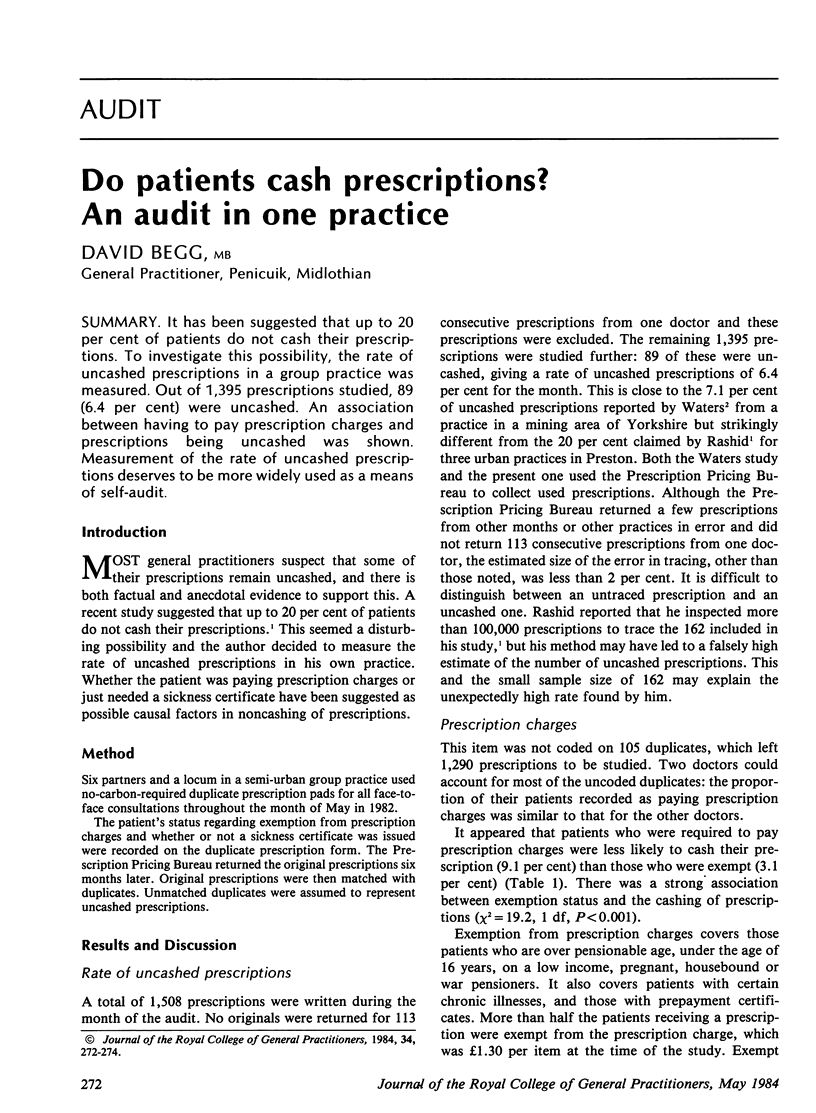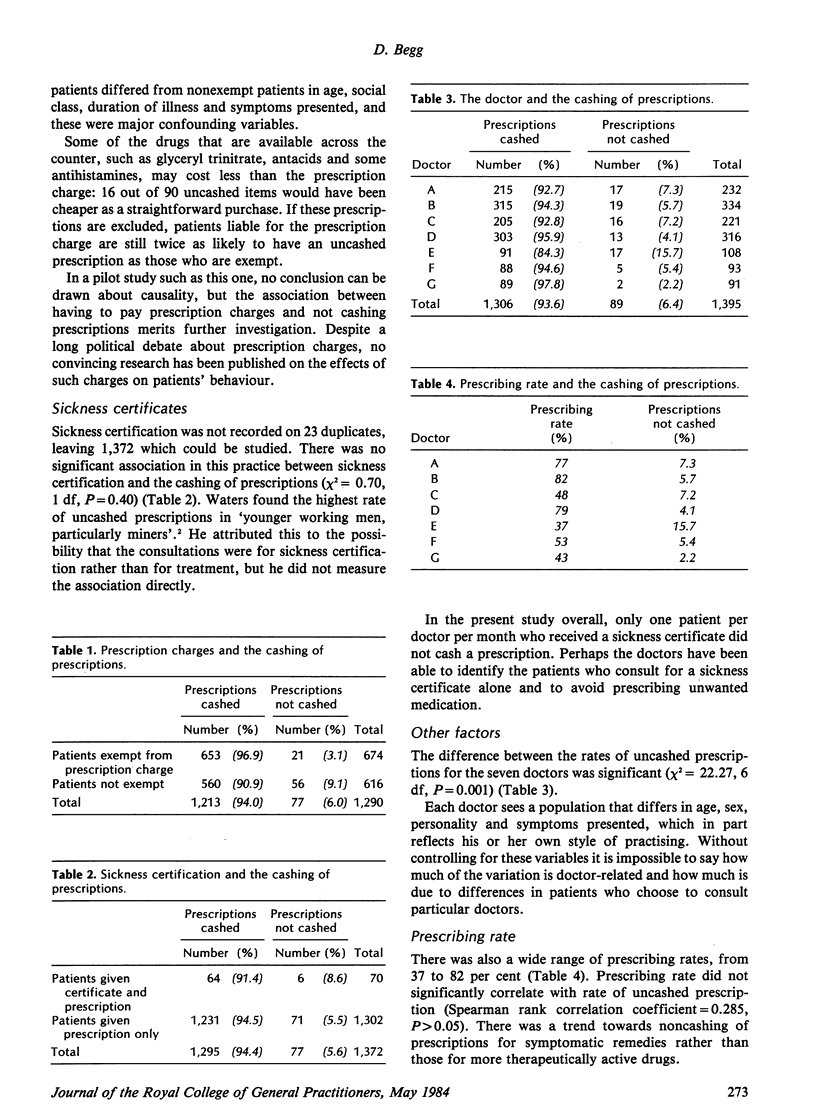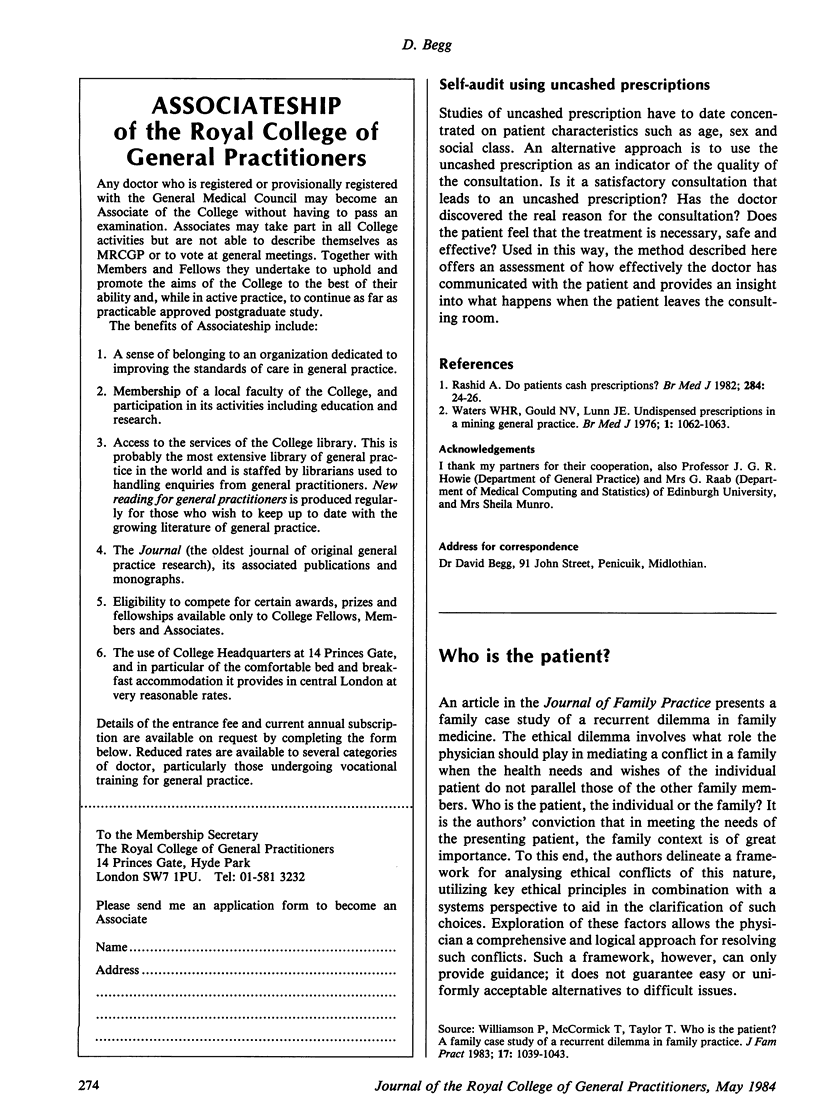Abstract
It has been suggested that up to 20 per cent of patients do not cash their prescriptions. To investigate this possibility, the rate of uncashed prescriptions in a group practice was measured. Out of 1,395 prescriptions studied, 89 (6.4 per cent) were uncashed. An association between having to pay prescription charges and prescriptions being uncashed was shown. Measurement of the rate of uncashed prescriptions deserves to be more widely used as a means of self-audit.
Full text
PDF


Selected References
These references are in PubMed. This may not be the complete list of references from this article.
- Rashid A. Do patients cash prescriptions? Br Med J (Clin Res Ed) 1982 Jan 2;284(6308):24–26. doi: 10.1136/bmj.284.6308.24. [DOI] [PMC free article] [PubMed] [Google Scholar]
- Waters W. H., Gould N. V., Lunn J. E. Undispensed prescriptions in a mining general practice. Br Med J. 1976 May 1;1(6017):1062–1063. doi: 10.1136/bmj.1.6017.1062. [DOI] [PMC free article] [PubMed] [Google Scholar]
- Williamson P., McCormick T., Taylor T. Who is the patient? A family case study of a recurrent dilemma in family practice. J Fam Pract. 1983 Dec;17(6):1039–1043. [PubMed] [Google Scholar]


